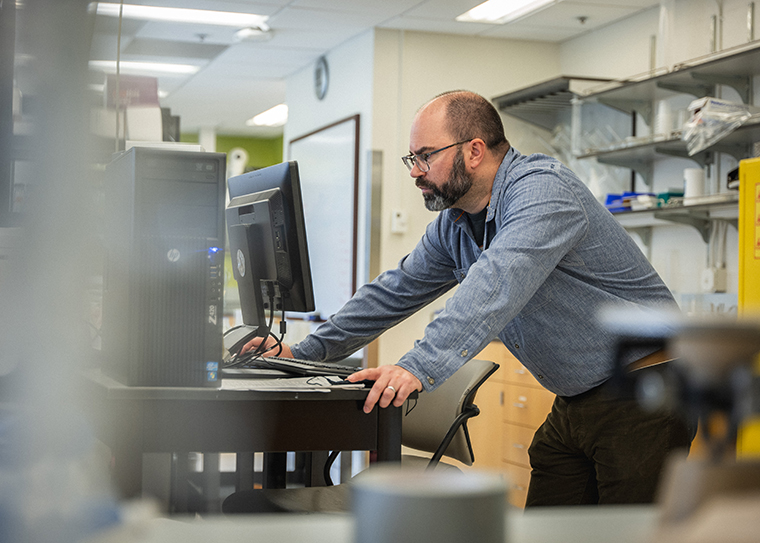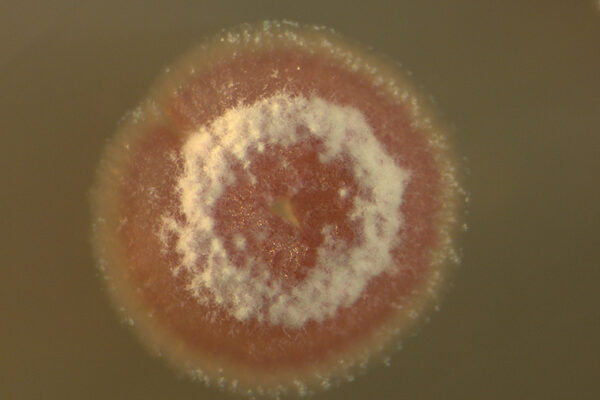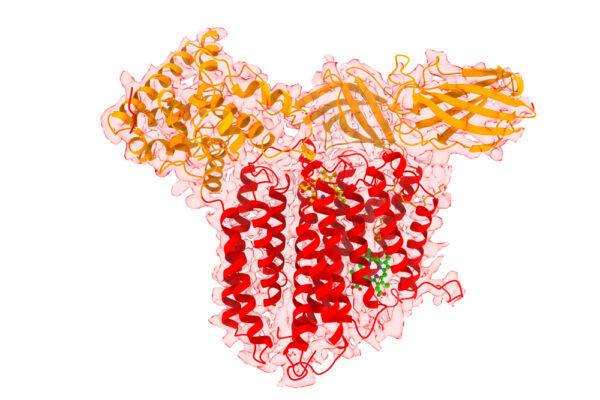Demand for new kinds of antibiotics is surging, as drug-resistant and emerging infections are becoming an increasingly serious global health threat. Researchers are racing to reexamine certain microbes that serve as one of our most successful sources of therapeutics: the actinomycetes.
Scientists at Washington University in St. Louis and the University of Hawaii discovered a potential candidate for drug development from one such microbe, the soil bacterium known as Lentzea flaviverrucosa. They reported their findings in a study published April 19 in the Proceedings of the National Academy of Sciences.
“Rare actinomycetes are an underexploited source of new bioactive compounds,” said Joshua Blodgett, assistant professor of biology in Arts & Sciences, co-corresponding author of the new study. “Our genomics-based approach allowed us to identify an unusual peptide for future drug design efforts.”
Actinomycetes produce bioactive components that form the basis for many clinically useful drugs, especially antibiotics and anticancer agents. Since the 1940s, pharmaceutical companies have analyzed many common actinomycetes to see what they might produce. Today, about two-thirds of all antibiotics used in hospitals and clinics are derived in part from actinomycetes.
But some of these microbes — known as the rare actinomycetes — have been catalogued but not extensively studied so far.
The definition of “rare” is not set in stone, but these actinomycetes tend to be more difficult to find in nature than others, and they may grow more slowly, Blodgett said. For these and other reasons, many rare actinomycetes have not been fully characterized for drug discovery and biotechnology purposes.
Among the rare actinomycetes, Lentzea flaviverrucosa emerged as a standout, Blodgett said.
“It has unusual biology, encoding for unusual enzymology, driving the production of unexpected chemistry, all harbored within a largely overlooked group of bacteria,” he said.
Blodgett and his collaborators, including co-corresponding author Shugeng Cao at the University of Hawaii, discovered that this rare actinomycete produces molecules that are active against certain types of human ovarian cancer, fibrosarcoma, prostate cancer and leukemia cell lines.
The scientists initially spotted Lentzea flaviverrucosa when they went looking for rare actinomycetes with a genetic hallmark that indicates that they can make piperazyl molecules. These molecules incorporate an unusual building block that is a flag for potential drug-like activities, Blodgett said.
But as the researchers dug deeper, they uncovered a few other surprises.
“At a high level, it looked as if one region of the genome might be able to make two different molecules. That’s just a little strange,” Blodgett said. “Usually we think of a gene cluster, groups of genes that are like blueprints for making individual drug-like molecules. But it looked like there was almost too much chemistry predicted within this single cluster.”
The early clues proved to be accurate. Using a combination of modern metabolomics with chemical and structural biology techniques, Blodgett and team were able to show that this rare actinomycete actually produces two different bioactive molecules from a single set of genes called a supercluster.
Superclusters are scarce in biology. This particular kind of supercluster encodes for two different molecules that are later welded together in an atypical chemical reaction.
“Nature is welding two different things together,” Blodgett said. “And, as it turns out, against several different cancer cell lines, when you stick A and B together, it turns into something more potent.”
This research was funded in part by the National Science Foundation (NSF-CAREER 1846005).



